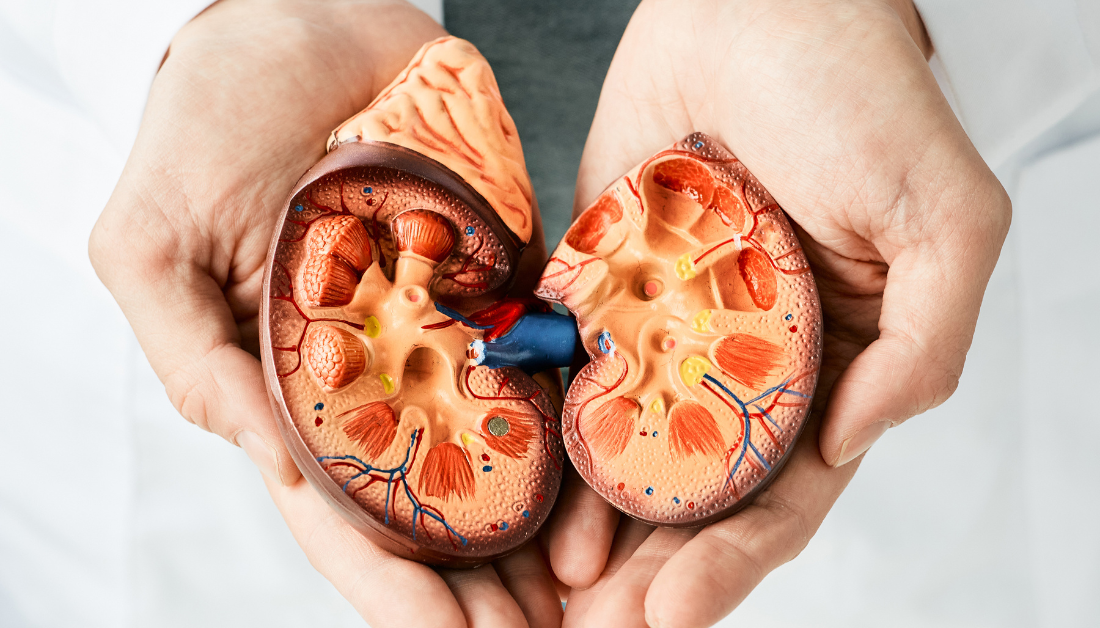

Previous clinical decision-making guidance in advanced chronic kidney disease (CKD) was mostly centered on eGFR levels. However, current guidelines propose using alternative techniques, such as the Kidney Failure Risk Equation (KFRE), to estimate kidney failure risk when caring for advanced CKD patients. The KFRE is a validated model that uses age, gender, eGFR, and urine albumin-creatinine ratio to estimate the 2- and 5-year chances of renal failure.
“When talking to patients with advanced CKD, setting expectations on the time to kidney failure is a way of expressing prognosis that can be more intuitive to grasp when compared to using other data points,” explains Chi D. Chu, MD, MAS. “Understanding prognosis in terms of time can inform time-sensitive decisions in kidney failure preparation, such as helping guide referrals for vascular access placement in patients who opt for hemodialysis because of the lead time needed before a fistula is ready for use.”
Counseling Patients on Prognosis & Future Risks
Dr. Chu and colleagues conducted a study, published in the American Journal of Kidney Diseases, that examined associations between KFRE-predicted risk and time to renal failure in a patients with advanced CKD who were actively followed in a nephrology clinic. “The goal of our study was to describe how eGFR and 2-year kidney failure risk using KFRE corresponded to the expected time to kidney failure,” says Dr. Chu.
From 2013 to 2021, the study included 1,641 patients with an eGFR less than 60 mL/min/1.73 m2 from 34 nephrology practices in the United States. Dr. Chu and colleagues looked at participants who had either a 2-year KFRE or an eGFR. The researchers utilized Weibull models to calculate the median, 25th, and 75th percentile delays to renal failure for KFRE values of 20%, 40%, and 50%, as well as eGFR values of 20, 15, and 10 mL/min/1.73 m2. During a median of 19 months of follow-up, 268 participants had renal failure, while 180 died before developing kidney failure.
Estimated Time to Kidney Failure Varies Widely
When compared to the 20 mL/min/1.73 m2 eGFR threshold, KFRE thresholds exhibited a similar relationship for time to renal failure across different patient characteristics. A higher incidence of KFRE was linked to a shorter time to renal failure. The median projected time to kidney failure from an eGFR of 20 mL/min/1.73 m2 varied greatly across patient characteristics and was shorter for younger patients, men, and Black people, as well as people with diabetes, greater albuminuria, and higher blood pressure. The time to kidney failure distribution was imprecise, as seen by broad interquartile ranges in less advanced CKD.
“For patients with very advanced CKD, both eGFR and the KFRE provided similarly precise time estimates to kidney failure,” Dr. Chu says. “However, there is huge variability with less advanced CKD in the time that patients have before reaching kidney failure. It becomes difficult to accurately predict the time to kidney failure, especially when using only eGFR. With longer time horizons, the prognosis is more susceptible to competing events, such as death occurring before kidney failure. For patients with a short life expectancy, the discussion of CKD prognosis should also consider the possibility that the patient may never reach kidney failure in their lifetime.”
Working Toward an Effective Way to Express Prognosis
According to Dr. Chu, the findings suggest time to renal failure can be an additional tool to help clinicians communicate prognosis and guide decision making. “Expressing prognosis in terms of time can be a helpful adjunct when discussing expectations and planning or preparing for renal failure,” he says. “Clinicians are accustomed to synthesizing data on eGFR, albuminuria, and comorbidities to answer questions about how long patients have until they would start dialysis. Our study provides further data to support the clinical gestalt in these prognostication scenarios.”
Unanswered questions remain on how best to communicate prognosis and identify optimal decision-making strategies in a way that incorporates multiple outcomes. “We need to determine whether time correspondences can help inform time-sensitive clinical decisions in renal failure preparation in a way that can improve outcomes,” Dr. Chu says. “Future research should also explore whether eGFR and/or KFRE thresholds should be recommended for certain clinical decisions.”
For more information: Utility of the Kidney Failure Risk Equation and Estimated GFR for Estimating Time to Kidney Failure in Advanced CKD, American Journal of Kidney Diseases
https://doi.org/10.1053/j.ajkd.2023.03.014
more recommended stories
 Healthy Habits Slash Diverticulitis Risk in Half: Clinical Insights
Healthy Habits Slash Diverticulitis Risk in Half: Clinical InsightsHealthy Habits Slash Diverticulitis Risk in.
 Caffeine and SIDS: A New Prevention Theory
Caffeine and SIDS: A New Prevention TheoryFor the first time in decades,.
 Microbial Metabolites Reveal Health Insights
Microbial Metabolites Reveal Health InsightsThe human body is not just.
 Reelin and Cocaine Addiction: A Breakthrough Study
Reelin and Cocaine Addiction: A Breakthrough StudyA groundbreaking study from the University.
 Preeclampsia and Stroke Risk: Long-Term Effects
Preeclampsia and Stroke Risk: Long-Term EffectsPreeclampsia (PE) – a hypertensive disorder.
 Statins and Depression: No Added Benefit
Statins and Depression: No Added BenefitWhat Are Statins Used For? Statins.
 Azithromycin Resistance Rises After Mass Treatment
Azithromycin Resistance Rises After Mass TreatmentMass drug administration (MDA) of azithromycin.
 Generative AI in Health Campaigns: A Game-Changer
Generative AI in Health Campaigns: A Game-ChangerMass media campaigns have long been.
 Molecular Stress in Aging Neurons Explained
Molecular Stress in Aging Neurons ExplainedAs the population ages, scientists are.
 Higher BMI and Hypothyroidism Risk Study
Higher BMI and Hypothyroidism Risk StudyA major longitudinal study from Canada.

Leave a Comment